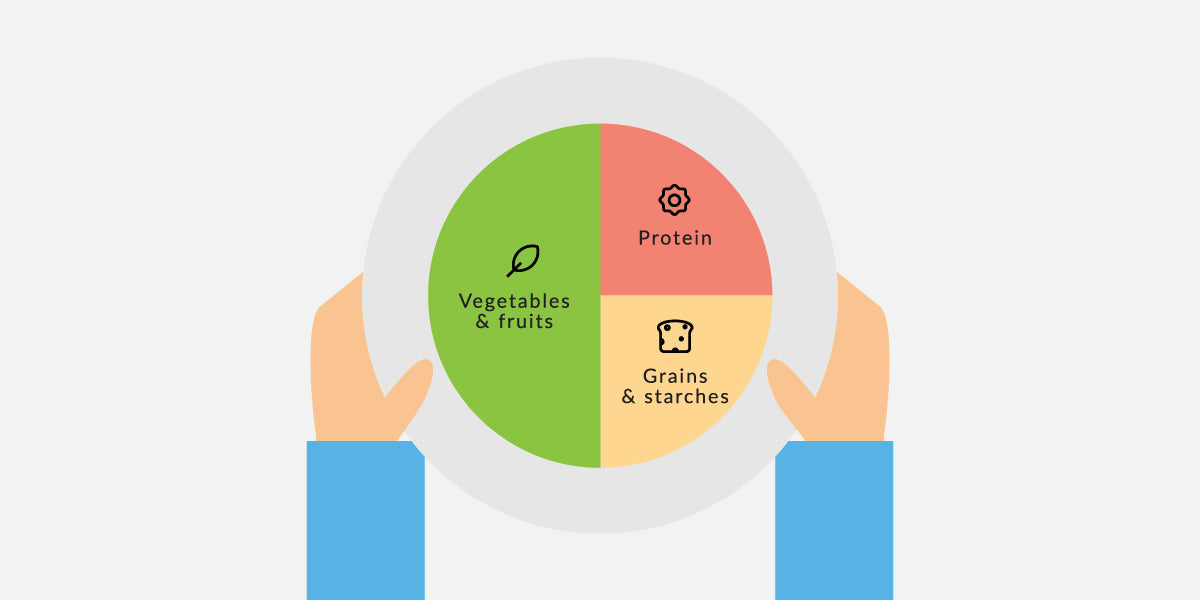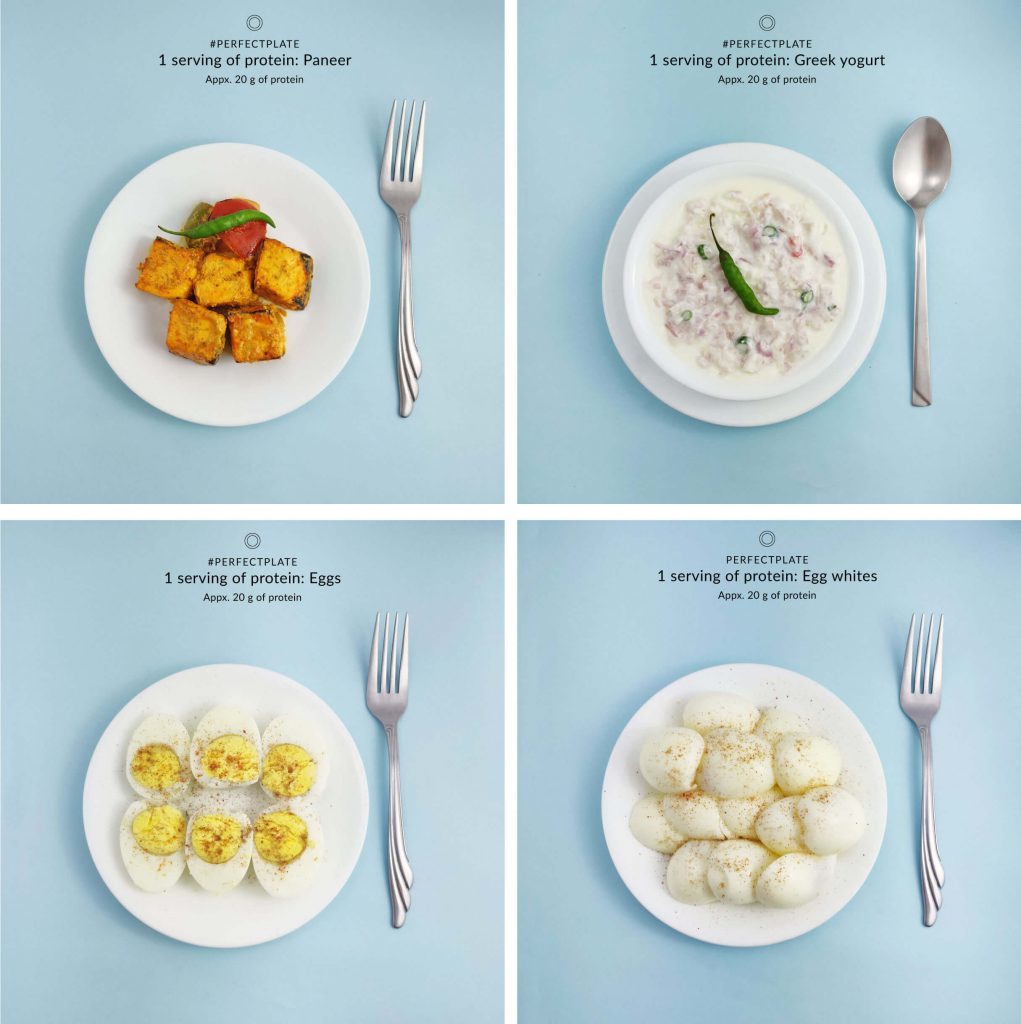Design your perfect plate
Over the past few weeks, we have broken down the components of healthy eating using the diets of the healthiest, longest living individuals as a benchmark. The common factor in the diets of these long-lived individuals are the proportions of each meal, with half of their meal consisting of fruits & vegetables and a quarter consisting of protein and grains respectively.
This is what a perfect plate looks like.

These individuals are ‘mindlessly healthy’, in that they don’t pay any special attention to what they eat, but focus on eating the right kinds of foods in the right quantities. Our goal in breaking down the #perfectplate is to simplify this approach to eating so that everyone can follow it with little to no effort, as this approach is far more sustainable over time than extreme diets.
Building your perfect plate
While the proportions of the components of a meal are fairly straightforward, an understanding of the quantities we need is necessary to successfully implement this approach. Our height and weight help determine our Basal Metabolic Rate (BMR) – the amount of energy (in calories) that we need for our body to carry out its basic functions. When we factor in our activity levels, which include everything from taking a shower to exercise, we arrive at our Total Daily Energy Expenditure (TDEE), which tells us how many calories we need in a day to maintain our current lifestyle.
If we eat more than our TDEE requirement, we tend to put on weight as the surplus energy is stored by our body. This also applies to putting on muscle – we need to eat over our TDEE to put on muscle mass as well. Similarly, if we eat less than our TDEE requirement we tend to lose weight.
Our TDEE is the starting point to planning our #perfectplate. A number of calculators to determine TDEE are available, such as the link below:
Once we know the total calories we need to consume in a day, we need to break this up into vegetables & fruits, grains & starches and protein.
We’ve simplified the process into three simple steps:
- Determine your ideal calorie intake: This would be your TDEE (from the link above) if you want to maintain your weight. You can subtract 200-300 calories from this number if you want to lose weight, or add a similar amount if you want to put on some weight (this applies to putting on muscle as well).
- Look up your calorie target in the table below to know how much of each food group you should be eating in a day.
- Refer to the images below to see exactly what a serving looks like.

Examples of portion sizes for each food group as per the table above:
Grains/Starch - 40 gms of carbohydrates

Non - vegetarian food - 20 gms of protein

Vegetarian food - 20 gms of protein
Vegan food - 20 gms of protein
Fat Sources



Implementing the dietary habits of the longest living people on the planet is that simple! Eating in these portion sizes is incredibly easy, and more importantly, sustainable. Rather than cutting out entire food groups, eating everything in the right proportion is something that can be done indefinitely, with little to no cravings.
We hope that this approach can help you understand what works best for you and empower you to take charge of your health!







Leave a comment